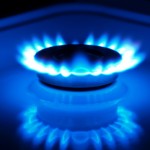WTI and Brent prices were higher during midday trade in Europe today, as investors weighed an armed conflict and a growing political confrontation in Iraq, OPECs second-top oil exporter. Meanwhile, natural gas prices fell below the $4 mark, as cooler weather over the US is expected.
WTI for September delivery on the New York Mercantile Exchange traded at $98.20 per barrel at 14:23 GMT, up 0.56%. Prices ranged from $97.37 to $98.27 per barrel. The contract dropped 0.2% last week.
Meanwhile, September Brent on the ICE in London was up 0.26% at $105.29 per barrel. Daily low and high were at $104.68 and $105.34 per barrel, respectively. Brent’s premium to WTI narrowed to $7.09.
Iraqi PM Nouri Maliki said he will take Iraq’s president Fouad Massoum to court over what Maliki called a “coup”, after the President refused to offer Mr Maliki, whose party won majority in April’s election, a mandate to form a government.
Soon after Mr Maliki went on TV to accuse the President, security forces loyal to the PM appeared in Baghdad. No confrontations were reported, but the move was widely seen as a show of force by the PM, who has dismissed the calls to step down.
In a later development, President Masum asked the deputy parliament speaker Haider al-Abadi to form a new government, after he was nominated by Shia parties. President Fouad Massoum said in a TV address that he hoped Mr Abadi would succeed in forming a government that would “protect the Iraqi people”.
The US expressed their full support for President Masum earlier, while continuing to support Kurdish fighters in their struggle against the Islamic State (IS). Meanwhile, Kurdish authorities asked for arms to fight the “better-equipped” IS militants.
“There is probably no doubt on the ground that the strikes have helped improved confidence on the Kurdish side,” Ole Sloth Hansen, an analyst at Saxo Bank A/S in Copenhagen, said for Bloomberg. “Given the U.S. commitment to bomb, if the Islamic State stick their neck out too far I would say the situation there is contained.”
Natural gas
Natural gas for delivery in September traded at $3.943 per million British thermal units at 14:24 GMT in New York, down 0.48%. Prices ranged from $3.937 to a three-week high of $4.012 per mBtu. The contract added 4.3% last week.
Money managers cut natural gas net-long positions by 21% in the week through August 5, US Commodity Futures Trading Commission data show, while Goldman Sachs trimmed its Q4 natgas outlook to $4 per mBtu, down from $4.25.
“If you are a money manager and you see above-average storage injections week after week and a decline in price, selling is rational,” Tim Evans, energy analyst at Citi Futures in New York, said for Bloomberg on August 8, after the storage report. “There’s no massive heat wave consistently across the U.S. that is going to spike air-conditioning demand, and we continue to see production numbers that show robust growth.”
The Energy Information Administration reported on Thursday that US natural gas inventories rose by 82 billion cubic feet last week, which was in line with expectations and compared to a 49 Bcf average gain for the past five years. It was the fifteenth straight week of above-average injections for US inventories, and reaffirmed sentiment that stocks will fully replenish ahead of heating season, as is projected by the EIA.
Output from the Marcellus shale in the Northeast topped 15 bcf per day this month, with more capacity being added in August. Meanwhile, lower than average temperatures drove power demand for air conditioning down, lowering natural gas demand, as power stations account for nearly 30% of US natural gas consumption. The US itself has a 21% share of global natgas demand.
The next seven days will bring showers and comfortably cool temperatures to the Midwest and Northeast, NatGasWeather.com reported today. Several degrees of cooling will be logged deep into the southeastern states as well, easing power demand, while the Southern Plains and Texas remain quite hot, with seasonal to above-seasonal temps. Overall cooling demand will be low.
“There are a lot of reasons to be bearish short term,” analysts at NatGasWeather.com said in a note to clients today. “Highs of 70s over much of the Midwest and Northeast will kill cooling demand for many days. Weather patterns are quite bearish over the next 7-10 days but will then ease as warmer temperatures return.”





